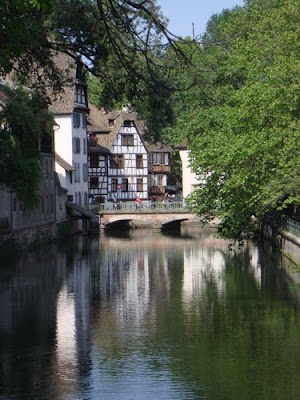Surrounded by two arms of the River Ill, the Grande Ile (Big Island Strasbourg
The Grande Île of Strasbourg is an outstanding example of an urban ensemble characteristic of central Europe and a unique ensemble of domestic architecture in the Rhine Valley
Surrounded by two arms of the River Ile, the Grande Île (Large Island
Rising above the high-pitched roofs with multi-storied dormer windows, several churches stand out on the skyline. The cathedral, whose single spire dominates the Alsatian plain, and the four old churches of St Thomas (12th-15th centuries), St Pierre-le-Vieux (13th-15th centuries), St Pierre-le-Jeune (12th-15th centuries), and St Etienne (12th century), are more than just isolated monuments: they fit coherently into an old quarter that exemplifies medieval cities and reflects the evolution of Strasbourg from the 15th to the 18th centuries. The cathedral, which is the principal element of the World Heritage site, illustrates this historic and urban coherence. It cannot be dissociated from the Oeuvre Notre-Dame, the institution which controlled the funds for its construction and upkeep. However, it is also closely tied to the Palais Rohan, built by the Rohan family in 1732-42 facing the south end of the transept as a residence for the cardinals, princes, and bishops of the family. The cathedral is closely linked with the Collège des Jésuites (now the Lycée Fustel de Coulanges) which adjoins it.
What emanates from the tight network of streets of shops and craftsmen is the image of medieval and post-medieval Christian society. The street names reflect the guild movement - Rue des Tonneliers, Rue des Charpentiers, Rue des Ecrivains, Place du Marché-aux-Poissons, Place du Marché-aux-Cochons-de-Lait, and so forth.
Public buildings such as the Hôtel de Ville (1585, today the Chamber of Commerce) or La Grande Boucherie de la Ville (1587-88, now a historic museum) stand alongside inns (Hôtellerie du Cerf), boutiques, and workshops, as well as elegant town mansions (the Rammerzell house and others in the Rue Mercière, the Rue du Vieux-Marché-aux-Poissons, and elsewhere).



















Niciun comentariu:
Trimiteți un comentariu